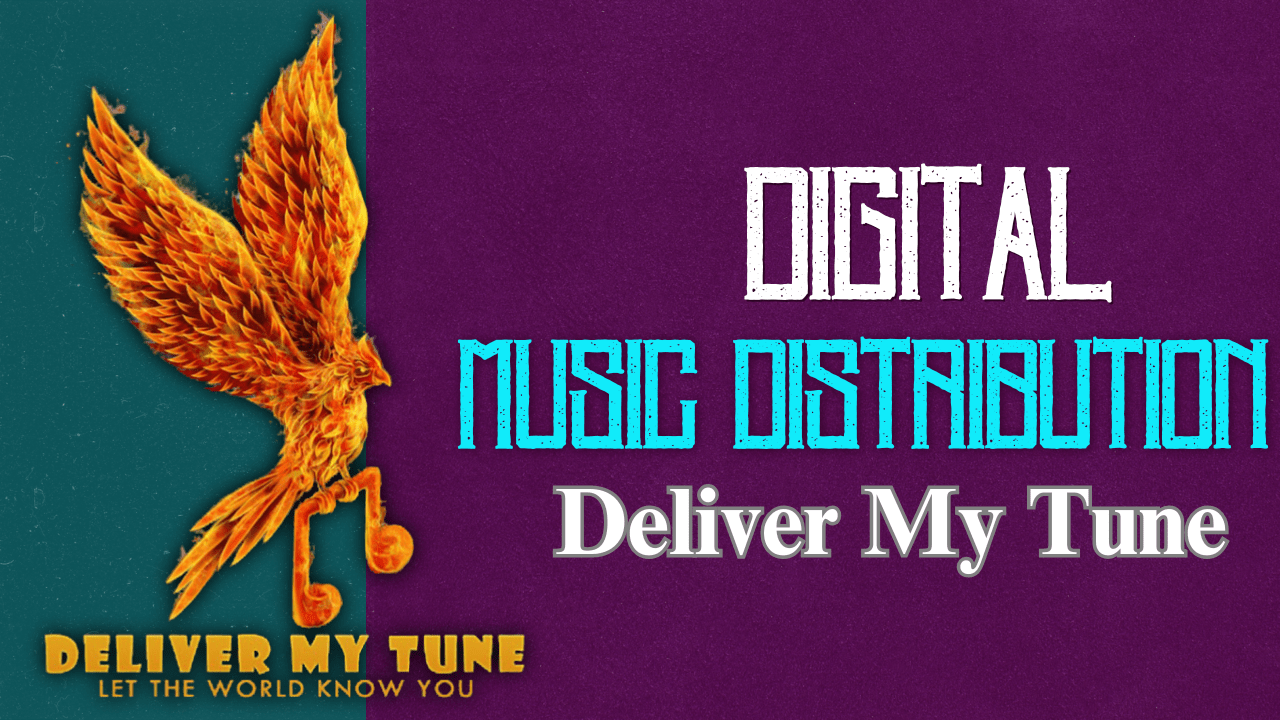In the digital era, digital music distribution has become a fundamental part of the music industry. It enables artists to share their music with fans worldwide without the traditional hurdles of physical distribution or the backing of a major label. By understanding and using digital distribution, independent artists gain control over their music careers, making it easier to reach audiences, earn royalties, and manage their releases effectively. Whether you’re an emerging musician or a seasoned artist, navigating the ins and outs of digital music distribution is essential for your growth in today’s competitive music market.
In this guide, we’ll explore everything about digital music distribution: what it is, how it works, how to select the best platforms, and strategies to maximize your reach and income. You’ll learn how to avoid common pitfalls, the future of digital distribution, and how you can stand out in a crowded digital marketplace.
What is Digital Music Distribution?
Digital music distribution is the process of making music available on various online platforms. Unlike traditional distribution, which relied on physical media like CDs and vinyl records, digital distribution allows musicians to reach listeners directly through streaming and download services. This shift has opened up opportunities for musicians worldwide, allowing even independent artists to release music globally without the need for a record label.
A digital music disributor acts as an intermediary between the artist and streaming platforms. They handle the technicalities, such as uploading your music, distributing it across platforms, and managing royalty payments. Most distributors work with popular platforms like Spotify, Apple Music, Amazon Music, and YouTube Music, along with numerous other regional and niche services.
Why Digital Music Distribution Matters in Today’s Music Industry
Digital music distribution has redefined the industry, creating a more level playing field for independent musicians. Here’s why it’s crucial:
- Broader Reach: With streaming services available worldwide, digital distribution allows artists to connect with global audiences. This is an advantage for musicians seeking to build a fanbase beyond local or national borders.
- Revenue Opportunities: Each play, download, and stream on digital platforms generates income. Services like Spotify and Apple Music offer royalty payments for every stream, which can add up over time.
- Complete Control Over Releases: Digital distribution platforms empower musicians to decide when and how their music is released, putting artists in the driver’s seat.
- Data-Driven Decisions: Digital platforms provide analytics that help musicians understand where their fans are located, what tracks are popular, and how listeners engage with their music. This data is invaluable for planning tours, marketing, and creating new music.
- Cost-Effectiveness: Without the costs associated with physical distribution, digital music distribution is an affordable way to make music accessible.
How Digital Music Distribution Works: A Step-by-Step Guide
Step 1: Choose a Digital Distributor
The first step in digital music distribution is choosing the right distributor. Distributors, or aggregators, act as a bridge between the artist and streaming services. They take care of getting your music onto platforms like Spotify, Apple Music, and Amazon Music. Each distributor has its own pricing structure and range of services, so it’s essential to select one that fits your needs. Here are some popular digital music distributors:
- DistroKid: Known for its low annual fee and unlimited uploads.
- TuneCore: Offers an established platform with multiple revenue streams.
- Deliver My Tune: A highly regarded platform offering various packages for individual artists and labels, with a commitment to fair royalties and artist support.
- CD Baby: Known for providing one-time fees and access to a large number of platforms.
Step 2: Prepare Your Music and Metadata
Once you’ve chosen a distributor, prepare your music files and metadata. Metadata includes important details such as track name, artist name, album title, genre, release date, and more. Accurate metadata ensures that your music is easily searchable on platforms and that you receive appropriate credit and royalties.
- File Format: Most distributors accept high-quality WAV files.
- Artwork: Your album art should meet platform specifications, usually 3000 x 3000 pixels and in a JPG format.
- Credits: Adding credits like producer, songwriter, and featured artists helps increase visibility.
Step 3: Upload Your Music
After preparing your music and metadata, the next step is to upload it to your distributor’s platform. This process is generally straightforward, as most distributors offer an easy-to-use interface where you can drag and drop files, enter metadata, and select platforms for release.
Step 4: Choose a Release Date
Selecting a release date is essential for maximizing impact. Some artists choose immediate releases, while others prefer scheduling their releases for a specific date. Planning a release date can help with marketing efforts, including social media promotion, pre-save campaigns, and playlist pitching.
Step 5: Monitor Your Release and Promote Your Music
After your music goes live, monitor its performance using analytics provided by your distributor or streaming platforms. Services like Spotify for Artists offer data on how listeners interact with your music, which can inform your promotional strategy.
Top Digital Music Distribution Platforms
Choosing the right digital music distribution platforms can make a significant difference in your success. Here are some of the most popular platforms for streaming and downloading music:
1. Spotify
Spotify is a leading streaming platform with over 400 million active users. Its features, like playlist placements, artist verification, and Spotify for Artists analytics, make it a valuable platform for artists.
2. Apple Music
Apple Music has a strong global presence and offers high-quality streaming options. For artists, it provides analytics and artist profile customization through Apple Music for Artists, a valuable tool for tracking streams and fan engagement.
3. Amazon Music
Amazon Music is growing quickly and offers an option for both streaming and downloads. With Alexa integration, Amazon Music makes it easy for listeners to access music on various devices.
4. YouTube Music
YouTube Music leverages the popularity of YouTube, enabling musicians to reach audiences visually and audibly. Artists can release music videos alongside their tracks to engage listeners on a different level.
5. Tidal
Tidal is known for its higher royalty rates and focus on high-quality audio. It attracts a niche audience of audiophiles who appreciate sound quality, making it a great platform for artists aiming for a premium listening experience.
6. Deezer
With its strong presence in Europe and Latin America, Deezer is an excellent choice for artists targeting international listeners. Deezer’s focus on curated playlists also provides great exposure for new tracks.
Key Revenue Models in Digital Music Distribution
There are several ways to generate revenue through digital music distribution:
- Streaming Royalties: Streaming platforms pay per play, with platforms like Spotify paying fractions of a cent for each stream. However, with a high volume of streams, this income can be substantial.
- Download Sales: Platforms like iTunes and Amazon offer direct purchase options for songs and albums, generating revenue per download.
- Sync Licensing: If your music is chosen for use in commercials, TV shows, or films, you’ll earn sync royalties, an increasingly important income source for musicians today.
- Merchandise and Concert Ticket Sales: Many streaming platforms now allow artists to link to merchandise stores or concert tickets, adding another layer of income.
It’s essential to work with a distributor that provides clear royalty reports and offers high revenue shares. Platforms like Deliver My Tune offer up to 85% royalties, ensuring that artists retain most of their earnings.
Strategies for Effective Music Promotion Post-Distribution
Successful music distribution isn’t complete without promotion. Here’s how to amplify your digital presence:
Social media is critical for music promotion. Platforms like Instagram, Facebook, TikTok, and Twitter are ideal for connecting with fans, sharing updates, and promoting new releases. Engaging social media management services can enhance your strategy by creating consistent and engaging content.
Playlist Placements
Getting your music featured on playlists is one of the most effective ways to gain streams and new fans. Many distributors offer playlist pitching as part of their services, or you can reach out to independent playlist curators to feature your music.
Music Blogs and Influencer Marketing
Submitting your music to popular blogs or collaborating with influencers can give your release a visibility boost. Influencers can help you reach new audiences and lend credibility to your brand.
Pre-Save Campaigns
Pre-save campaigns are a great way to generate excitement before a release. When fans pre-save your song on Spotify or Apple Music, it’s added to their library on the release date, increasing your initial stream count and making it more likely that the song will be featured in playlists.
Engage Through Video Content
Platforms like YouTube Shorts, TikTok, and Instagram Reels allow you to post short videos that can quickly go viral. Share teasers of your music, behind-the-scenes footage, or live performances to connect with your audience.
Digital Music Distribution: Challenges and Solutions
While digital music distribution offers great potential, it’s not without challenges. Here are some common challenges and how to tackle them:
Royalty Collection and Transparency
With so many platforms, tracking and collecting royalties can be complex. Choose a distributor that offers transparent reporting, and consider third-party services that can help you manage royalty collection more efficiently.
Metadata Accuracy
Incorrect metadata can lead to delayed releases or missing credits. Double-check all metadata fields, including track titles, artist names, and album details, to avoid issues.
Revenue Delays
Some platforms take several months to process and pay royalties, which can be challenging for musicians relying on consistent income. Working with a distributor that offers monthly or quarterly payouts can alleviate this issue.
Maintaining Visibility
With so many songs released daily, it’s easy for music to get lost in the digital sea. Focusing on sustained marketing efforts, including social media, playlist placements, and regular fan engagement, can help keep your music visible.
Future Trends in Digital Music Distribution
The digital music landscape continues to evolve. Here are some trends shaping the future of music distribution:
- AI-Driven Discoverability: AI algorithms on streaming platforms are making it easier for listeners to discover new music based on their preferences. By focusing on high-quality content and engagement, you can leverage these algorithms to reach more fans.
- Blockchain for Royalty Transparency: Blockchain technology may help streamline royalty tracking and distribution, making it easier for artists to get paid fairly and promptly.
- Increased Reach in Emerging Markets: As internet access grows, digital distribution will reach new listeners in emerging markets, providing additional revenue opportunities.
- Virtual Reality Concerts and Experiences: Virtual concerts gained popularity during the pandemic and are likely to continue evolving. Platforms may begin to support VR concerts, offering musicians a new way to engage fans.
- Direct-to-Fan Platforms: Platforms like Bandcamp allow artists to connect with fans directly, offering music, merchandise, and even exclusive experiences. This trend is likely to grow as artists seek more control over their distribution.
Conclusion
Digital music distribution is a game-changer for independent musicians, opening doors to global audiences and providing new revenue streams. With the right distribution partner, promotional strategy, and knowledge of the industry, you can make the most of digital distribution to build a successful music career. From choosing a distributor to promoting your releases, following these guidelines will help you navigate the world of digital music distribution with confidence.
Digital music distribution empowers you to bring your music to the world on your own terms—embrace it, promote it, and make your mark!
Related Articles:
For further reading, explore these related articles:
- Steps Behind Starting Your Music Label
- Mysterious Death of Elvis Presley: Was He Alive After Death?
- How Has Music Distribution Changed Over Years?
For additional resources on music marketing and distribution, visit Deliver My Tune.





